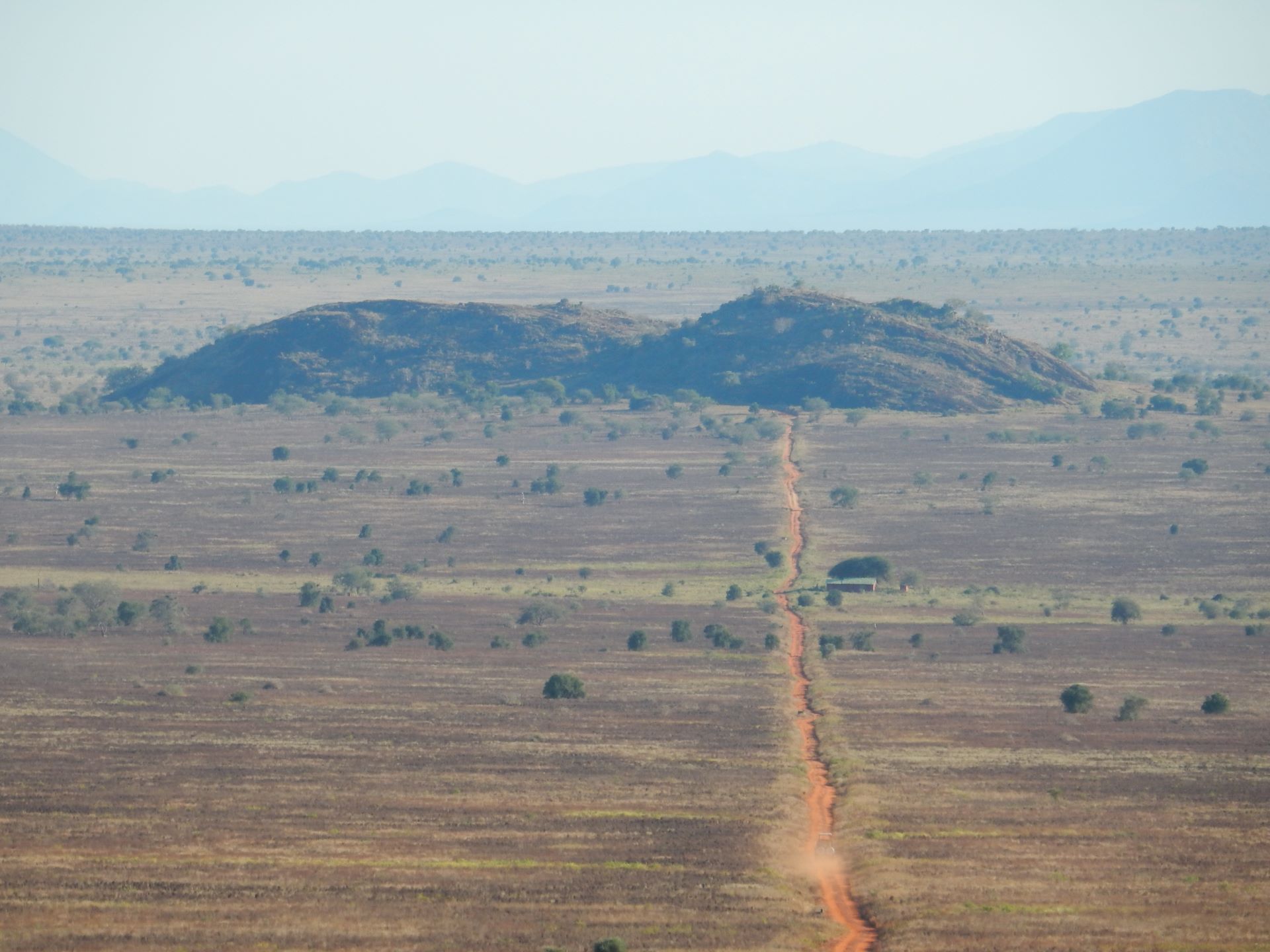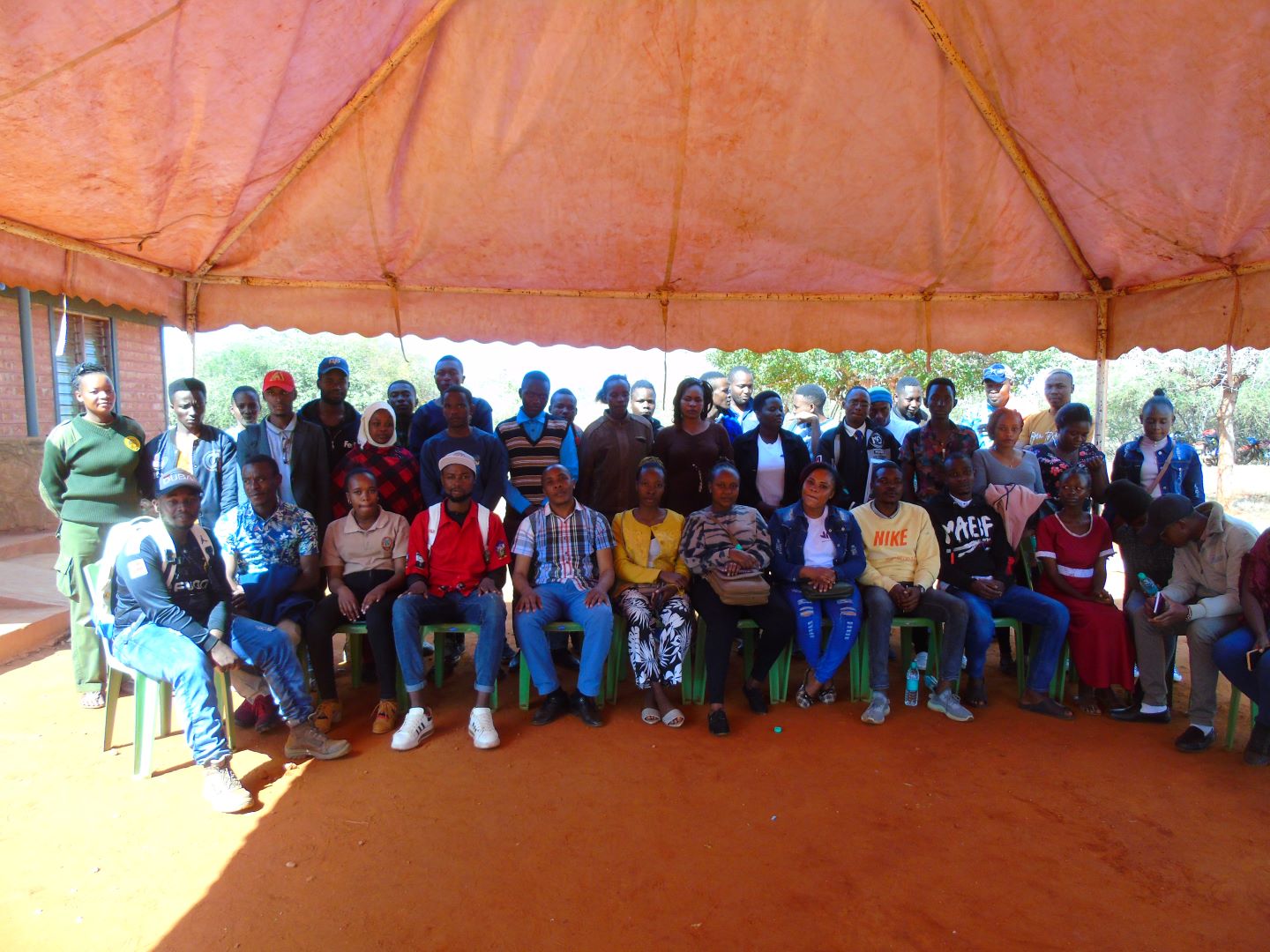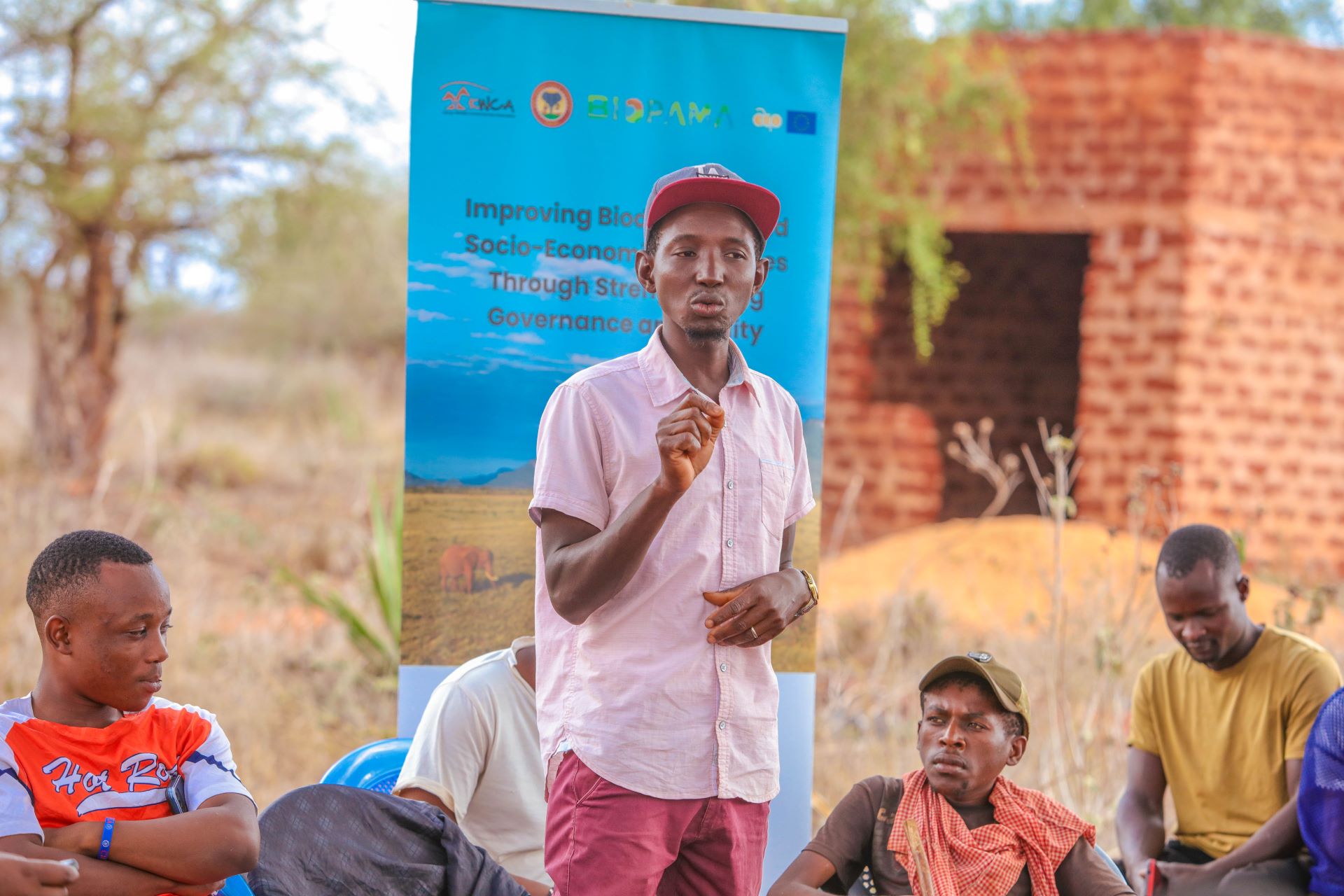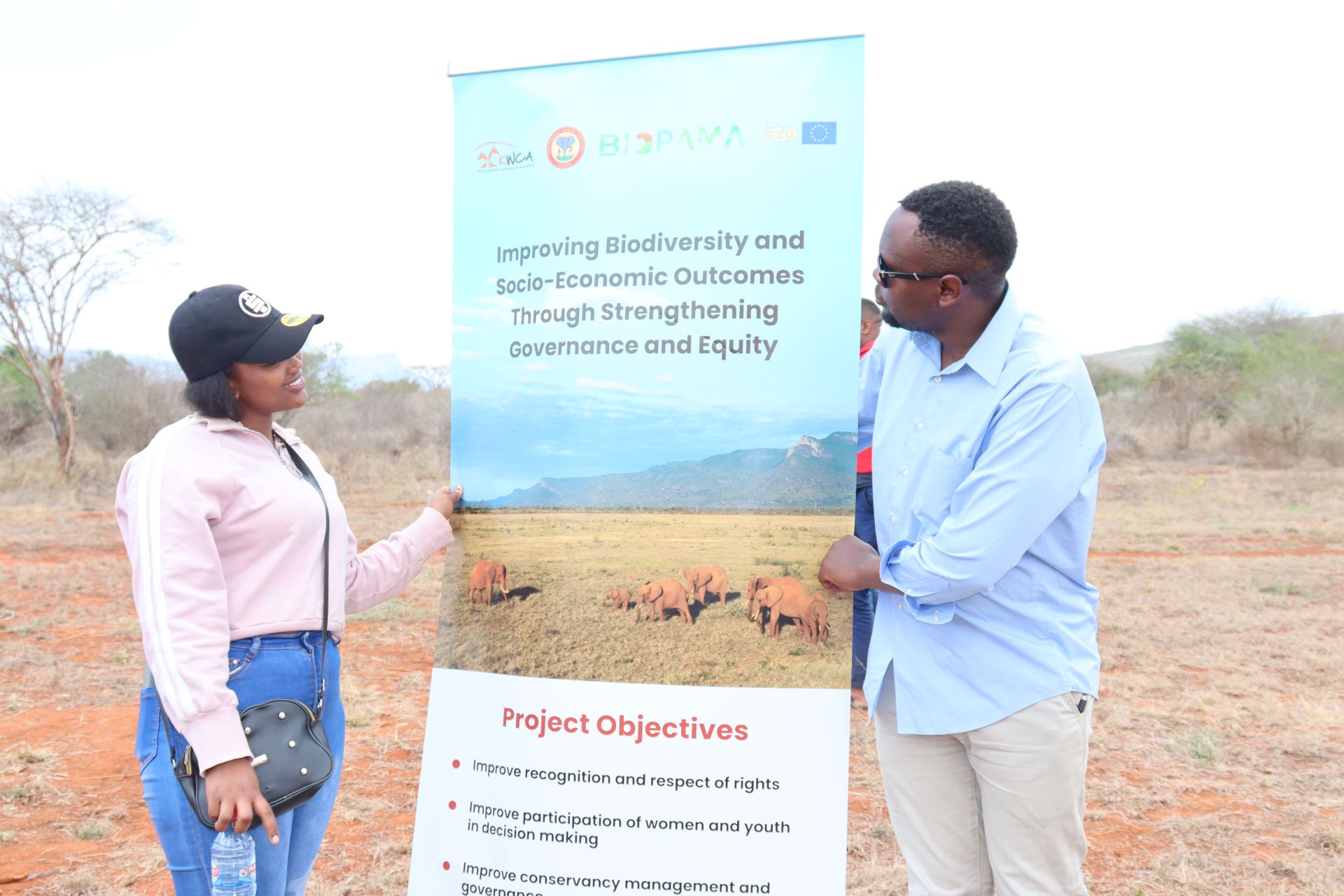 LUMO Conservancy, nestled in the heart of the Taita-Taveta County, was founded through the collaboration between three group ranches: Lualenyi, Mramba, and Oza. These ranches collectively set aside land for conservation, establishing LUMO as a community-owned and community-led wildlife conservation initiative. However, the socio-economic and cultural dynamics of the Taita community at the time shaped how the conservancy operated and who participated in its efforts. Ranching, the predominant economic activity of these group ranch members, was primarily dominated by senior male members of society. This cultural norm naturally influenced the governance and activities of LUMO, leading to the systemic exclusion of youth from meaningful participation in its conservation initiatives.
LUMO Conservancy, nestled in the heart of the Taita-Taveta County, was founded through the collaboration between three group ranches: Lualenyi, Mramba, and Oza. These ranches collectively set aside land for conservation, establishing LUMO as a community-owned and community-led wildlife conservation initiative. However, the socio-economic and cultural dynamics of the Taita community at the time shaped how the conservancy operated and who participated in its efforts. Ranching, the predominant economic activity of these group ranch members, was primarily dominated by senior male members of society. This cultural norm naturally influenced the governance and activities of LUMO, leading to the systemic exclusion of youth from meaningful participation in its conservation initiatives.
From the outset, LUMO’s activities were shaped by the priorities and practices of the older generation. The absence of deliberate efforts to involve younger members of the community in governance and operations left a significant demographic gap in the conservancy’s model. Youth were often unaware of the conservancy’s work, their roles, or their rights within the organization. This disconnect not only limited the potential contributions of the youth but also presented a broader challenge to achieving sustainability in conservation efforts.

The systemic exclusion of youth and other marginalized groups came into sharper focus following the Site-Level Assessment of Governance and Equity (SAGE) in 2021. This comprehensive assessment revealed the inequities in representation, highlighting the need for deliberate interventions to ensure inclusivity in LUMO’s conservation efforts. Among the key findings was the absence of structured platforms for youth engagement, which perpetuated a lack of generational transition in leadership and involvement.
To address this gap and with the support of BIOPAMA, LUMO established the Youth Forum in 2023 as a platform to facilitate meaningful participation by the younger generation. This intervention was informed by the SAGE findings and aimed to empower youth to take an active role in shaping the conservancy’s future.

The formation of the Youth Forum marked a significant turning point. For the first time, young people in the community had a dedicated space to learn about conservation, voice their concerns, and contribute to decision-making processes. Reflecting on this shift, Mr. Liverson Askari, a member of the Youth Forum, shared: “At least right now we have the opportunity as youth to come to the conservancy, convene, and actually plan youth-related activities and also get support from the management.”
Since its inception, educational workshops on critical topics such as the Wildlife Conservation and Management Act 2013 have provided youth with the legal and policy knowledge needed to engage effectively in conservation discussions. Additionally, hands-on activities such as reseeding degraded areas and removing invasive species have offered practical avenues for youth involvement. These efforts have not only enhanced the skills and confidence of the youth but have also contributed to the broader goals of the conservancy.
However, the journey of youth involvement at LUMO has not been without challenges. Despite the progress made, several systemic barriers continue to hinder the full integration of youth into the conservancy’s operations. A key challenge is the limited representation of youth in governance structures. While the Youth Forum provides a platform for engagement, its members lack formal representation on the conservancy’s board, restricting their influence on policy and decision-making.
Financial constraints have also limited the scope and impact of youth-led initiatives. While the support from BIOPAMA has been instrumental in establishing the Youth Forum and facilitating initial activities, sustained funding is necessary to scale these efforts and ensure their long-term viability.
 Despite these challenges, the journey of youth involvement at LUMO has also revealed significant opportunities for growth and transformation. The establishment of the Youth Forum has sparked a cultural shift within the community, with more young people recognizing the importance of conservation and their role in it. As Mr. Steve Mwadime, a member of the Youth Forum, noted: “Before the Youth Forum, I didn’t really know much about conservation. At least now, for the few sessions we have had, I understand a few things about LUMO’s work, and we have plans as youth to really get more involved.”
Despite these challenges, the journey of youth involvement at LUMO has also revealed significant opportunities for growth and transformation. The establishment of the Youth Forum has sparked a cultural shift within the community, with more young people recognizing the importance of conservation and their role in it. As Mr. Steve Mwadime, a member of the Youth Forum, noted: “Before the Youth Forum, I didn’t really know much about conservation. At least now, for the few sessions we have had, I understand a few things about LUMO’s work, and we have plans as youth to really get more involved.”
The road ahead will require collaboration, innovation, and sustained effort. With the continued support of our partners the Kenya Wildlife Conservancies Association, and the Taita Taveta Wildlife Conservancies Association, LUMO aims to institutionalize youth participation as a core element of its operations. By bridging the gaps of the past and fostering a culture of inclusivity, the conservancy is building a future where every member of the community—regardless of age—has a role to play in preserving its rich biodiversity and securing its sustainable development.
The journey of youth involvement at LUMO is a powerful display to the transformative power of inclusion. By empowering its youth, the conservancy is not only addressing historical inequities but also laying the foundation for a more resilient and sustainable model of community-led conservation. This evolution underscores the critical importance of generational transition and collaboration in ensuring the long-term success of conservation efforts.
